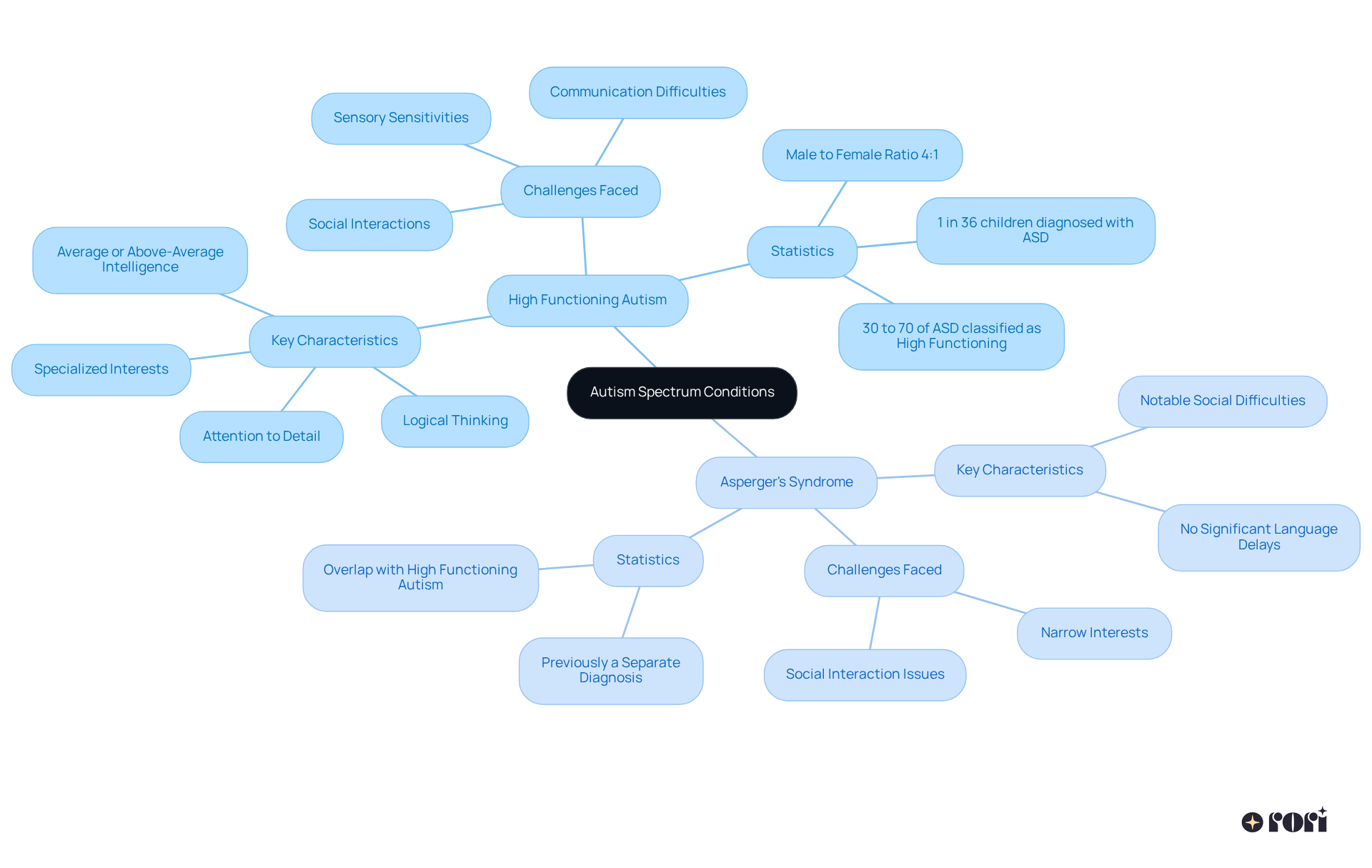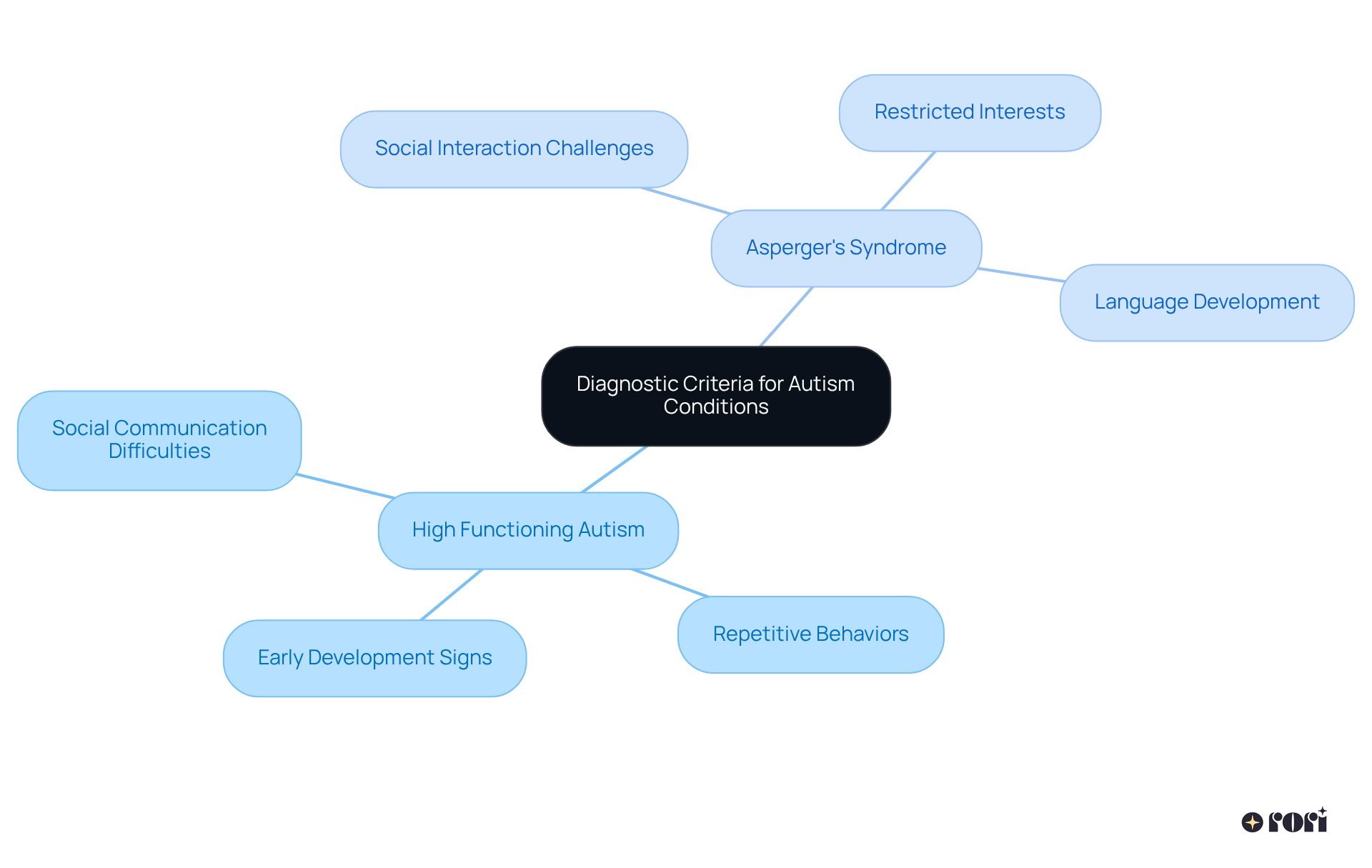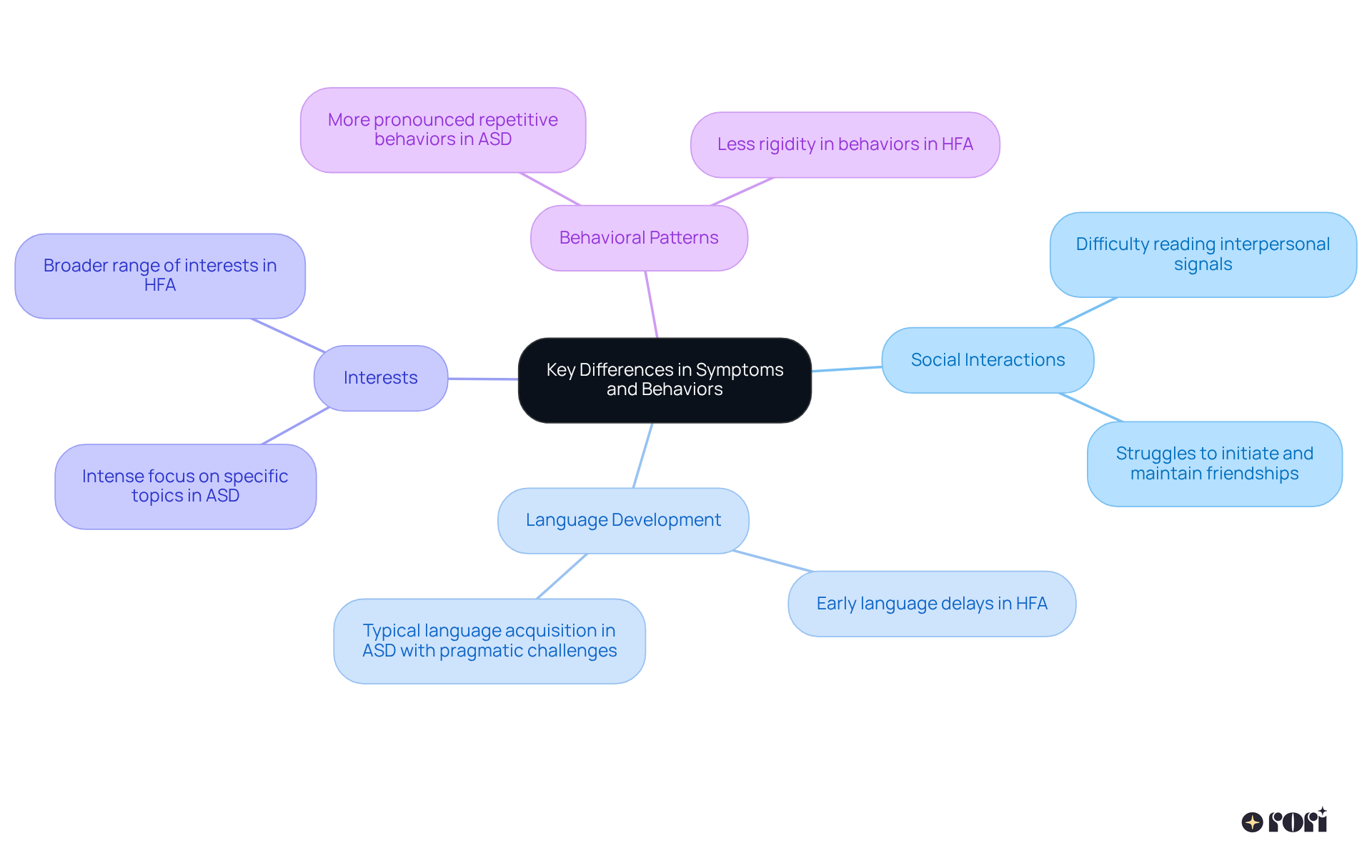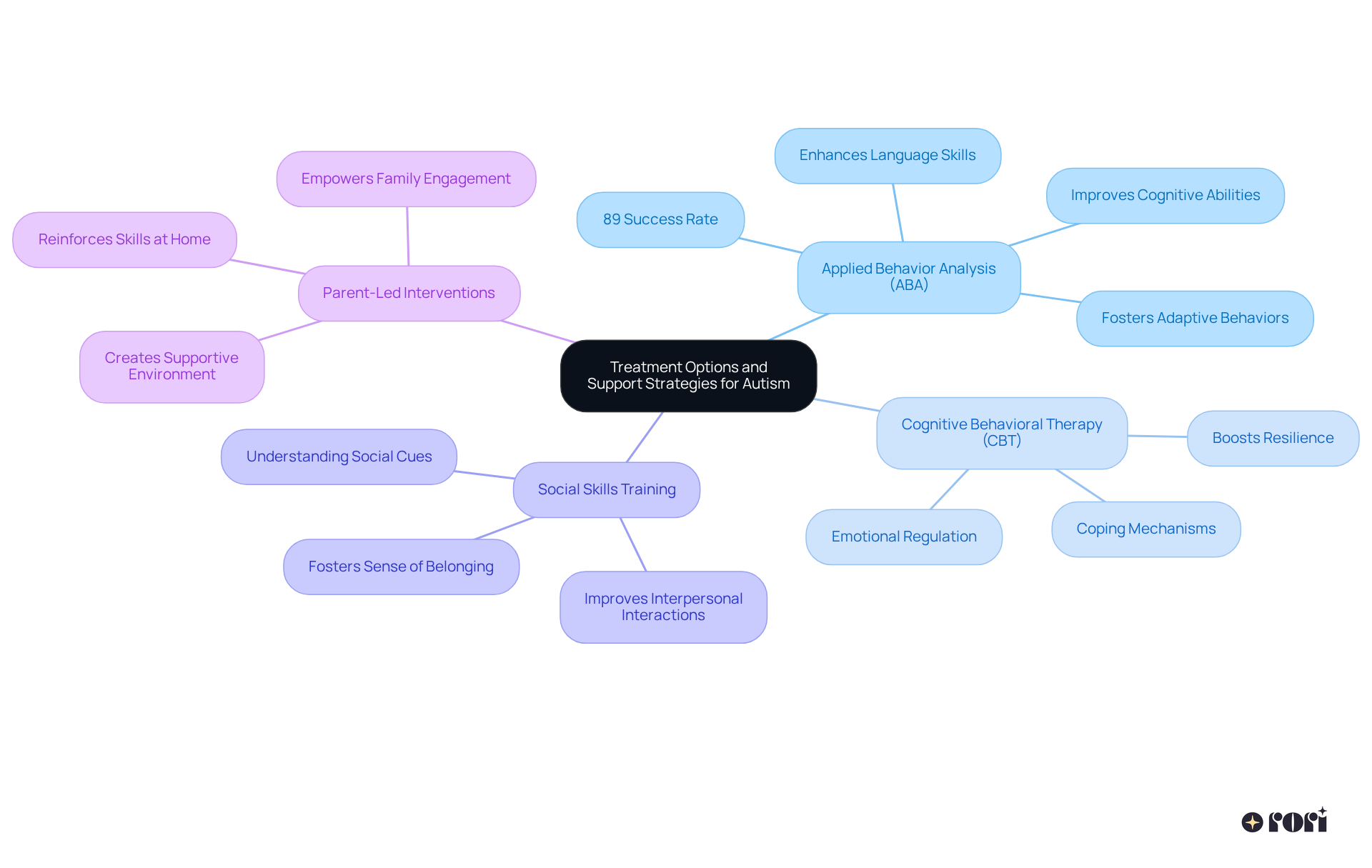High Functioning Autism (HFA) and Asperger's Syndrome might seem similar at first glance, but they actually represent distinct conditions within the Autism Spectrum Disorder (ASD). 😊 It's important to recognize the key differences in communication and behavioral patterns between the two.
Understanding these nuances is crucial for providing effective support and intervention. Let’s explore this together!
Understanding the nuances of autism spectrum disorders is crucial, especially as classifications evolve. High Functioning Autism (HFA) and Asperger's Syndrome often spark debates about their similarities and differences. Yet, they represent two distinct experiences within the spectrum.
This article delves into the defining characteristics, diagnostic criteria, and treatment options for both conditions. We aim to offer valuable insights for parents, educators, and individuals seeking clarity.
How can recognizing these distinctions enhance support strategies and improve outcomes for those affected? Let’s explore this together!
High Functioning Autism (HFA) is a term used for individuals on the autism spectrum who have average or above-average intelligence. These individuals often face fewer challenges with communication and social skills. Did you know that around 30% to 70% of those diagnosed with Autism Spectrum Disorder (ASD) can be classified as high functioning? This highlights how common this classification is within the broader spectrum. In the United States, about 1 in 36 children are diagnosed with ASD, which shows a significant prevalence rate.
Asperger's Syndrome, which was once seen as a separate diagnosis, is now part of the ASD umbrella. It’s characterized by notable social difficulties but without significant language delays, setting it apart from other developmental disorders. Interestingly, high-functioning developmental conditions often show a significant delay in early speech and language skills before the age of three. And there’s a notable gender disparity here too: the male-to-female ratio for high-functioning conditions is about 4:1.
While it is often debated whether high functioning autism is the same as Asperger's Syndrome, it’s important to understand their specific definitions. This helps in recognizing the unique traits of each condition. Recent studies show that individuals with high functioning conditions may have strengths like:
However, they might also face challenges in:
This nuanced understanding can really help in tailoring support and interventions to meet the diverse needs of those on the spectrum.
Moreover, estimating the percentage of individuals with high functioning autism can be complex. Variability in functioning levels and diagnostic criteria plays a role, highlighting the importance of careful assessment and support. Let’s explore this together! We’re here to help you every step of the way!

Diagnostic Criteria for High Functioning Autism:
Diagnostic Criteria for Asperger's Syndrome (now part of Autism Spectrum Disorder):
Tip: Getting familiar with the DSM-5 criteria can really help you understand how these conditions are diagnosed. This knowledge is so crucial for navigating the diagnostic process and finding the right support. Let’s explore this together!

Navigating social interactions can be a challenge for both High Functioning Autism (HFA) and Asperger's Syndrome, but they show up in different ways. For instance, folks with Asperger's often find it tricky to read interpersonal signals, which can make it hard to join in on conversations. On the other hand, those with HFA might have a better grasp of these interactions but still struggle to kick off and keep friendships going.
When it comes to language development, there's a noticeable difference too. Children with HFA frequently face early language delays, which can affect how they communicate. In contrast, individuals diagnosed with autism spectrum disorder usually pick up language at a more typical pace, though they might find pragmatic language skills—like understanding idioms or sarcasm—a bit challenging.
Interests can be intense in both groups, yet they often differ in focus. Individuals with autism spectrum disorder may fixate on specific topics, while those with high-functioning autism might have a broader range of interests but still find social engagement a bit tough.
Behavioral patterns also set them apart. Repetitive behaviors are often more pronounced in individuals with autism spectrum disorder, who may engage in specific routines or rituals. Meanwhile, youths with HFA might show less rigidity in their behaviors but can still exhibit some repetitive tendencies.
For example, a young person with Asperger's might dive deep into a singular topic, like trains, leading to lengthy discussions about it. In contrast, someone with HFA may enjoy a mix of interests, such as dinosaurs and video games, yet still find it challenging to connect with peers during play. Understanding these nuances in social interaction, language development, interests, and behaviors is vital for determining if high functioning autism is the same as Aspergers when tailoring effective interventions and support strategies.
According to the CDC, about 1 in 31 individuals aged 8 years has been identified with Autism Spectrum Disorder (ASD), highlighting the importance of recognizing these differences. As Wing noted, "a number of changes need to be made in order that the future version of DSM might be used reliably and validly in clinical practice and research," which emphasizes the need for clarity in diagnosis and treatment. Integrating these insights can help parents manage the complexities of developmental disorders and support their children's needs. Let’s explore this together!

Applied Behavior Analysis (ABA) is a crucial therapy for children with autism, which raises the question: is high functioning autism the same as Asperger's? This evidence-based approach focuses on enhancing specific behaviors and skills, making it an essential tool for promoting independence and social interaction. Research shows that ABA therapy boasts an impressive success rate, with studies highlighting improvements in cognitive abilities, language skills, and adaptive behaviors among young individuals who engage in this treatment. In fact, ABA therapy has over an 89% success rate in assisting individuals with developmental disorders (ASD), showcasing its effectiveness.
Cognitive Behavioral Therapy (CBT) complements ABA by providing individuals with strategies to manage anxiety and develop effective coping mechanisms. While specific statistics on CBT's success rates for youth with autism are limited, it is recognized for significantly boosting emotional regulation and resilience, especially for those navigating the complexities of interpersonal relationships.
Social Skills Training is another important aspect, focusing on improving interpersonal interactions and helping young individuals understand social cues. This training plays a vital role in building relationships and fostering a sense of belonging, which can be particularly challenging for those who wonder if high functioning autism is the same as Asperger's Syndrome.
Parent-Led Interventions empower families to actively engage in their child's development. By implementing strategies at home, parents can reinforce the skills learned in therapy, creating a consistent and supportive environment for growth. Rori Behavioral Innovations Inc. emphasizes that family involvement is crucial for achieving successful therapy outcomes.
For additional support, consider joining parent and caregiver support groups. These communities provide wonderful opportunities to share experiences, strategies, and resources, promoting a collaborative approach to addressing the challenges of caregiving. Supporting an individual with autism can cost around $60,000 per year, making it essential for families to understand the financial implications of treatment. Let’s explore this together!

High Functioning Autism (HFA) and Asperger's Syndrome are unique yet overlapping aspects of the autism spectrum, each presenting its own set of characteristics and challenges. Understanding these differences is so important for providing the right support and interventions tailored to individual needs. By recognizing the nuances in social interactions, language development, and behavioral patterns, caregivers and professionals can navigate the complexities of these conditions more effectively.
In this article, we’ve explored the definitions, diagnostic criteria, and key differences between HFA and Asperger's Syndrome. Early diagnosis and targeted treatment options can make a big difference. From Applied Behavior Analysis (ABA) to Cognitive Behavioral Therapy (CBT) and social skills training, there are various strategies that can significantly enhance the quality of life for individuals on the spectrum. Plus, the involvement of families and communities is crucial in fostering growth and resilience.
Ultimately, raising awareness about the distinctions between High Functioning Autism and Asperger's Syndrome is essential for promoting understanding and acceptance. By advocating for informed approaches to diagnosis and treatment, we can better support individuals with autism and their families. Together, we can ensure they receive the resources and opportunities necessary to thrive. Let’s explore this journey together, and remember, we’re here to help you every step of the way!
What is High Functioning Autism (HFA)?
High Functioning Autism (HFA) refers to individuals on the autism spectrum who have average or above-average intelligence and typically face fewer challenges with communication and social skills.
How common is High Functioning Autism among those diagnosed with Autism Spectrum Disorder (ASD)?
Approximately 30% to 70% of individuals diagnosed with Autism Spectrum Disorder (ASD) can be classified as high functioning, indicating that this classification is quite common within the broader spectrum.
What is the prevalence of Autism Spectrum Disorder (ASD) in children in the United States?
In the United States, about 1 in 36 children are diagnosed with Autism Spectrum Disorder (ASD), highlighting a significant prevalence rate.
How is Asperger's Syndrome related to High Functioning Autism?
Asperger's Syndrome was once considered a separate diagnosis but is now included under the Autism Spectrum Disorder (ASD) umbrella. It is characterized by social difficulties without significant language delays.
What are some characteristics of individuals with High Functioning Autism or Asperger's Syndrome?
Individuals with these conditions may exhibit strengths such as attention to detail, specialized interests, and logical thinking, while they may face challenges in social interactions, communication, and sensory sensitivities.
Is there a gender disparity in High Functioning Autism?
Yes, there is a notable gender disparity, with a male-to-female ratio of about 4:1 for high-functioning conditions.
Why is it important to understand the definitions of High Functioning Autism and Asperger's Syndrome?
Understanding the specific definitions helps recognize the unique traits of each condition, which is crucial for tailoring support and interventions to meet the diverse needs of those on the spectrum.
What factors complicate the estimation of individuals with High Functioning Autism?
The variability in functioning levels and diagnostic criteria complicates the estimation of individuals with High Functioning Autism, emphasizing the need for careful assessment and support.